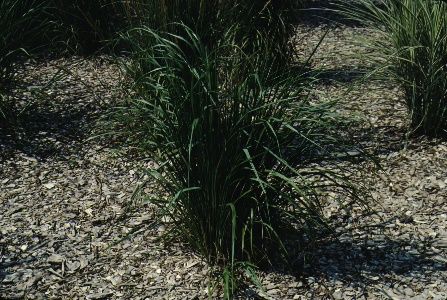Introduction
Reed grass is an ornamental grass that attains a height of 5 to 7 feet. The medium green leaves of this plant are lanceolate in shape and may reach a length of 5 to 7 feet. They also exhibit good fall and winter color. The inflorescence of this plant is a compact, spike like panicle that is 4 to 8 inches long. These inflorescences are loosely branched and have a pinkish white or reddish cast. They appear in the summer and are followed by attractive seed heads that are used in flower arrangements. This plant spreads by rhizomes which allows it to slowly increase in diameter.

Credit: Edward F. Gilman
General Information
Scientific name: Calamagrostis arundinacea
Pronunciation: kal-uh-muh-GRAW-stiss uh-run-din-NAYsee-uh
Common name(s): reed grass
Family: Gramineae
Plant type: herbaceous; ornamental grass
USDA hardiness zones: 5 through 9 (Figure 2)

Credit: undefined
Planting month for zone 7: year round
Planting month for zone 8: year round
Planting month for zone 9: year round
Origin: not native to North America
Invasive potential: not known to be invasive
Uses: specimen; mass planting; container or above-ground planter; cut flowers; border; accent
Availability: somewhat available, may have to go out of the region to find the plant
Description
Height: 5 to 7 feet
Spread: 5 to 7 feet
Plant habit: upright
Plant density: dense
Growth rate: fast
Texture: fine
Foliage
Leaf arrangement: most emerge from the soil, usually without a stem
Leaf type: simple
Leaf margin: entire
Leaf shape: lanceolate
Leaf venation: parallel
Leaf type and persistence: deciduous
Leaf blade length: more than 36 inches
Leaf color: green
Fall color: brown or tan
Fall characteristic: showy
Flower
Flower color: pink
Flower characteristic: summer flowering
Fruit
Fruit shape: elongated
Fruit length: less than 1/2 inch
Fruit cover: dry or hard
Fruit color: tan
Fruit characteristic: inconspicuous and not showy
Trunk and Branches
Trunk/bark/branches: typically multi-trunked or clumping stems
Current year stem/twig color: not applicable
Current year stem/twig thickness: not applicable
Culture
Light requirement: plant grows in part shade/part sun; plant grows in the shade
Soil tolerances: extended flooding; clay; acidic; loam
Drought tolerance: moderate
Soil salt tolerances: good
Plant spacing: 36 to 60 inches
Other
Roots: not applicable
Winter interest: plant has winter interest due to unusual form, nice persistent fruits, showy winter trunk, or winter flowers
Outstanding plant: plant has outstanding ornamental features and could be planted more
Invasive potential: not known to be invasive
Pest resistance: no serious pests are normally seen on the plant
Use and Management
Reed grass is excellent for naturalized areas in freshwater bogs and swamps, around lakes and ponds, and along streams. It is suited for planting near water gardens due to its tolerance of wet soil. It is a good specimen plant but also looks great planted in mass. This grass is tolerant of salt spray making it wonderful for coastal landscapes. In seashore plantings it can provide a tall screen or windbreak and is useful for erosion control. It is an aggressive plant with the potential to become invasive.
This grass can grow in an area of the landscape receiving full sun or partial shade. Reed grass prefers wet brackish soils but will thrive in heavy clay soils with less moisture. The size of this plant depends on the moisture supply; it will grow larger with increased moisture levels. One may need to dig out excess plants when they become invasive.
The propagation of reed grass is accomplished by plant divisions.
Pests and Diseases
Usually free of pests and diseases.